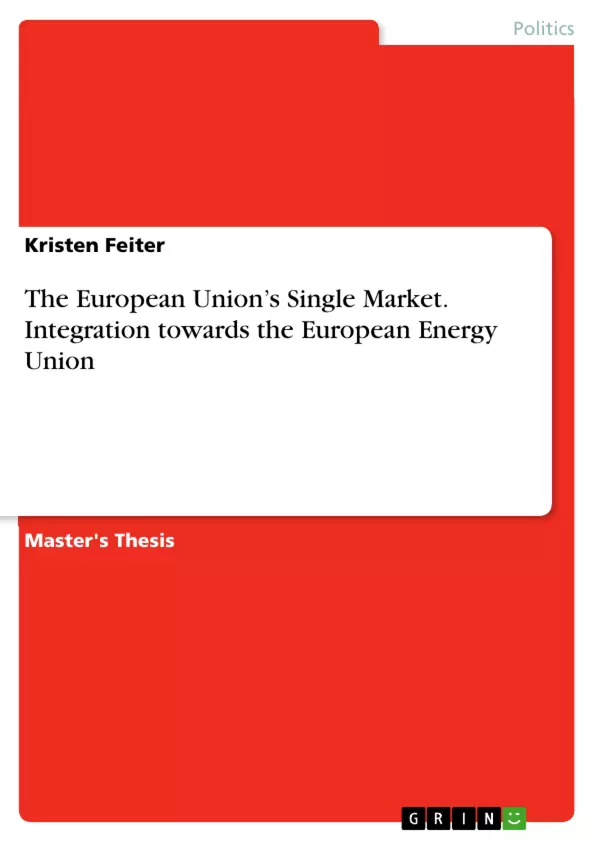The Regulation on the Governance of the Energy Union and Climate Action is a legislative act aiming to improve the governance structure of the internal energy market. The Regulation has been subject to academic dissensus and it remains unclear whether it has to be interpreted as a step towards renationalisation of the European Energy Policy or as increasing the powers of the Union’s institutions. The discussion is caused by the Regulations’ formulation which leaves room for interpretation and its effects are not sufficiently clear. This research aims to explain why the Governance Regulation materialised with ambiguous formulations. The issue is approached using Liberal Intergovernmentalist theory to explain this outcome. The theory can be used to explain regional integration and particularly European integration well and is based on intergovernmentalism but also includes aspects of realism and neo-liberalism which broadens the scope of the analysis. Concluding this contribution, it is found that the ambiguity of the Regulation was necessary due to cleavages among the Member States and to meet the smallest common denominator which allows for a first step of a common governance in European Energy Policy.
Inhaltsverzeichnis (Table of Contents)
- Introduction
- Controversies In The Academic Debate
- The Governance Regulation's Energy And Climate Reporting
- Analytical Framework
- THE SITUATION OF ENERGY POLICY IN GERMANY AND POLAND
- OPERATIONALISING LIBERAL INTERGOVERNMENTALISM
- A Liberal Intergovernmentalist View On The Governance Regulation
- ECONOMIC INTERESTS
- PREFERENCE FORMATION
- REDUCTION OF BARRIERS
- REDUCTION OF TRANSACTION COSTS
- Conclusion
- LIMITATIONS AND AVENUES FOR FUTURE RESEARCH
Zielsetzung und Themenschwerpunkte (Objectives and Key Themes)
This research aims to explain why the Governance Regulation materialized with ambiguous formulations. The issue is approached using Liberal Intergovernmentalist theory to explain this outcome. The theory can be used to explain regional integration and particularly European integration well and is based on intergovernmentalism but also includes aspects of realism and neo-liberalism which broadens the scope of the analysis.
- The impact of the Governance Regulation on the European Energy Union.
- The role of Liberal Intergovernmentalism in explaining the ambiguous formulations of the Governance Regulation.
- The influence of economic interests and preference formation in the development of the Governance Regulation.
- The challenges of achieving a common European Energy Policy in light of diverse national interests.
- The impact of the Governance Regulation on power distribution within the European Union.
Zusammenfassung der Kapitel (Chapter Summaries)
- Introduction: This chapter provides background information on the European Union's energy policy and highlights the challenges of achieving a common energy policy, particularly due to the contrasting interests of member states. It introduces the Governance Regulation and its ambiguity, leading to the research question: Could the Governance Regulation have intentionally been concluded with ambiguous formulation?
- Controversies In The Academic Debate: This chapter reviews the academic discourse surrounding the Governance Regulation, focusing on the differing interpretations of its impact on European Energy Policy. It explores the arguments for and against the Regulation's role in renationalization or strengthening the power of the Union's institutions.
- The Governance Regulation's Energy And Climate Reporting: This chapter examines the specific provisions of the Governance Regulation and its implications for energy and climate reporting. It explores the structure and goals of the Regulation, including its emphasis on transparency, cooperation, and the submission of integrated National Energy and Climate Plans by member states.
- Analytical Framework: This chapter outlines the theoretical framework of Liberal Intergovernmentalism, highlighting its key assumptions and how it can be applied to analyze the Governance Regulation. It explains how the theory considers factors such as national interests, power dynamics, and the role of economic interests in shaping European integration processes.
- A Liberal Intergovernmentalist View On The Governance Regulation: This chapter applies the Liberal Intergovernmentalism framework to the Governance Regulation, examining how the theory can explain the ambiguous formulation of the legislative act. It explores specific aspects of the Regulation, such as economic interests, preference formation, reduction of barriers, and reduction of transaction costs, through the lens of the theory.
Schlüsselwörter (Keywords)
This research focuses on the Governance Regulation and its implications for the European Energy Union. Key themes include: energy policy, climate action, European integration, Liberal Intergovernmentalism, economic interests, preference formation, power distribution, and national interests. The research examines the role of ambiguity in the Regulation's formulation and its impact on the balance of power between member states and the European Union.
- Quote paper
- Kristen Feiter (Author), 2018, The European Union’s Single Market. Integration towards the European Energy Union, Munich, GRIN Verlag, https://www.grin.com/document/512521



